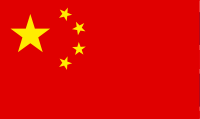Power factor
Resistance welding concerns an inductive load on the power supply. This is due to the inductance of the welding transformer and the secondary circuit. The natural consequence of this is that the current lags behind the voltage. This lag is represented by the phase angle Phi. As the old saying among electricians goes: With inductances, the currents are delayed. As my electrical engineering lecturer used to say. This lagging by the phase angle Phi unfortunately results in a power reduction, which is expressed by the factor “cos phi” (cosine Phi).
As a result, the thyristor can also only be extinguished with a delay, namely exactly the phase angle delayed after zero crossing, this is called inductive overhang. As a result, the counter thyristor can also only ignite when the voltage induced by the current still flowing in the pre-phase is so low that the counter thyristor has a positive anode voltage with respect to its cathode. In the welding controls, the adjustable ignition angle is preset in such a way that one does not enter the range of inductive overhang. Particularly in the upper modulation range, restrictions in the current setting range can occur in the case of poor cos Phi, i.e. strong lagging of the current due to large inductance in the secondary circuit.
This has no influence on the welding current to be achieved, but has the negative effect that the maximum welding current is already reached at values of 800 or 900 SKT. By setting the cos Phi manually or automatically, this can be prevented and the entire adjustment range is fully utilised. Or you use mid-frequency right away.
As always, you will find further information on this at your HWH partner, in the operating manuals of our controls with a detailed description of the cos Phi setting or in the book Resistance Pressure Welding by Mr. Manfred Krause.


